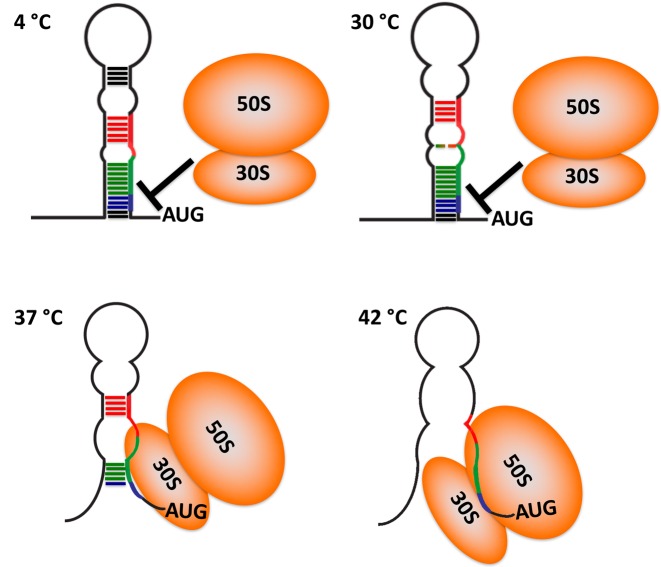Figure 6.
Model for the thermosensing activity of the CssA thermometer. Cartoon representation of temperature induced unzipping the thermometer, as revealed by NMR spectroscopy and SHAPE assays. Dark colored lines represent stable base pairs, whereas dotted lines correspond to weaker base-pairs which open up at the higher temperatures. At 4°C, all base pair regions are stably formed, and the ribosome cannot access the RBS which is fully occluded. As the temperature is raised toward 30°C, the RNA structure opens up, starting near the apical loop and the A44G45-U84 bulge in center of the repeated 8 bp elements, shown in red and green, respectively. At this temperature, the RBS, shown in blue color, is still inaccessible and protein synthesis inhibited. By 42°C, the thermometer structure is fully open, leading to efficient translation. Around the narrow transition temperature range near 37°C, the thermometer exists in equilibrium between closed and open states. The ribosome (depicted in orange) samples the population of open thermometers to recognize the RBS and initiate translation.

